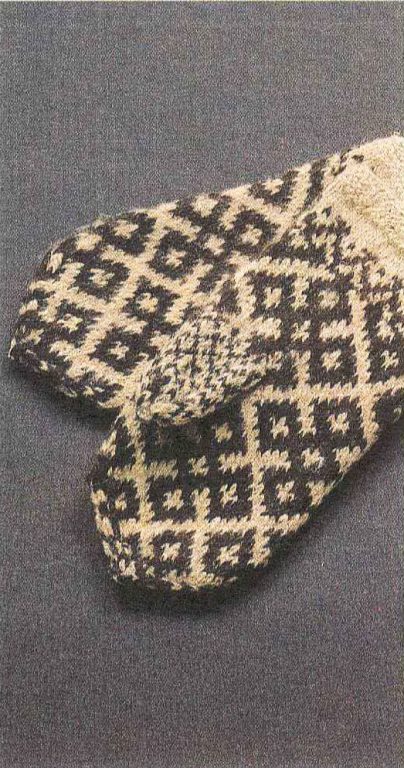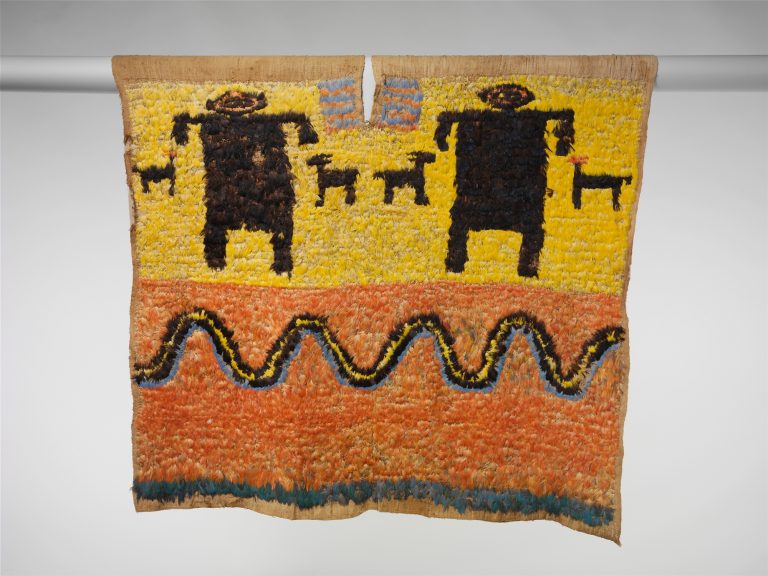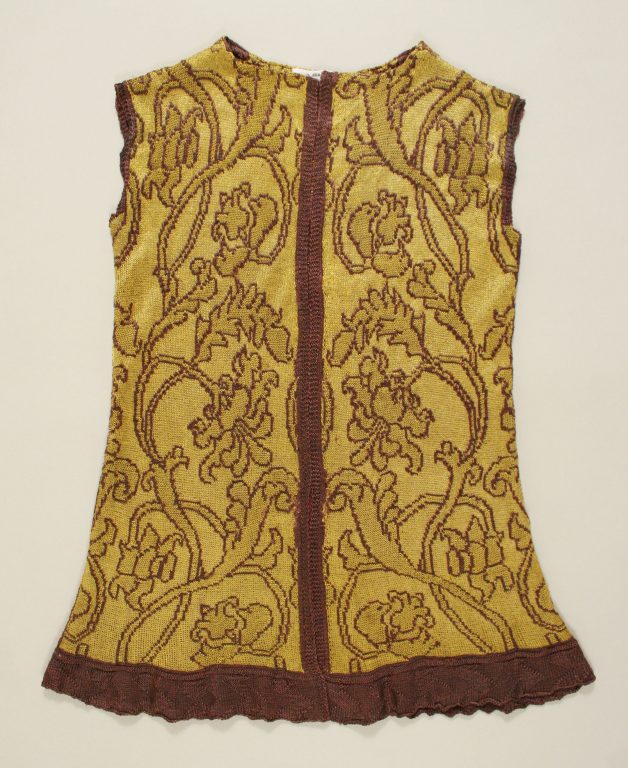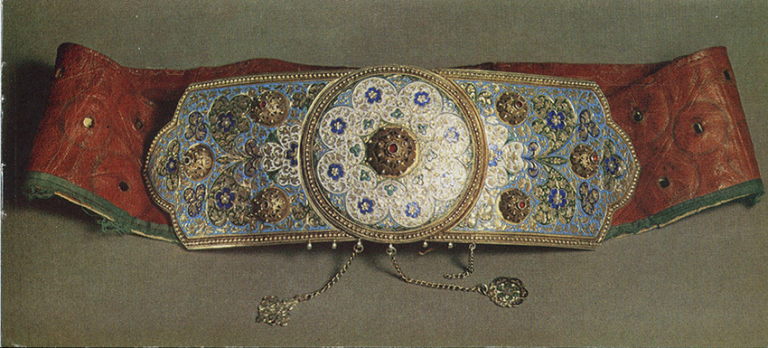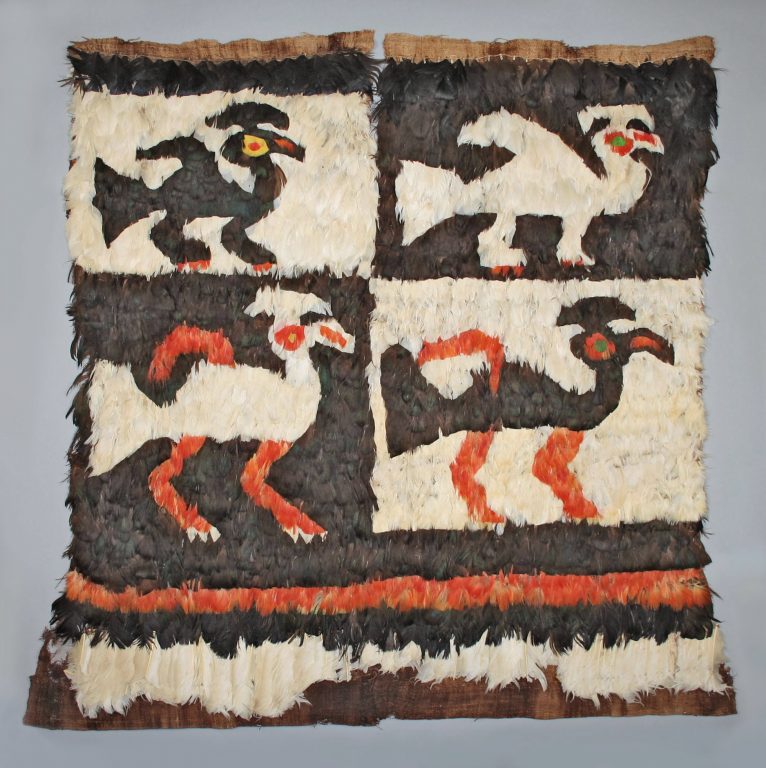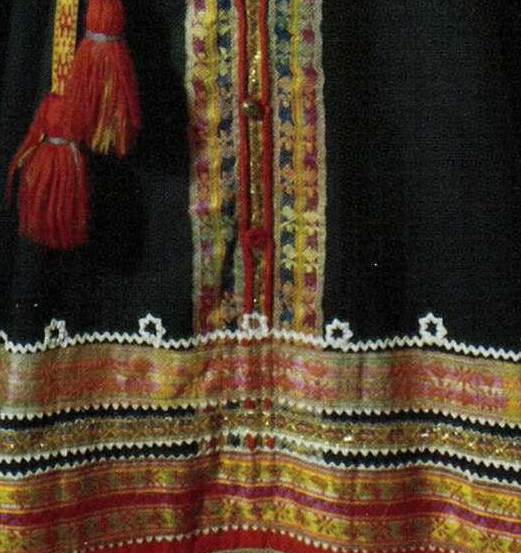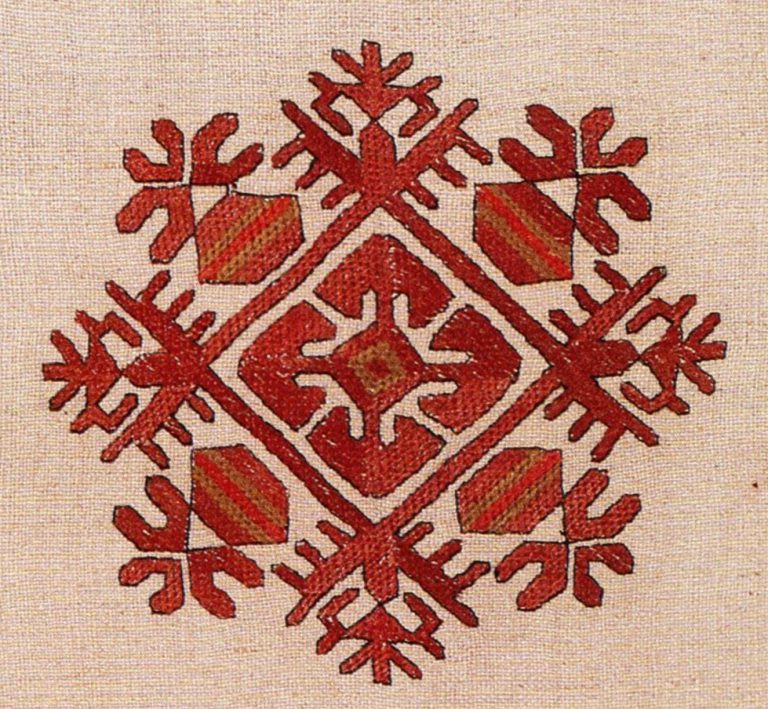

-
Objectclothes: Tabard
-
Type of arts & crafts
-
MediumCotton, feathers
-
SizeH. 30 Г— W. 25 in. (76.2 Г— 63.5 cm)
-
Geography details
South America -
Country today
-
Date15th-16th century
-
CultureChimГє
-
Type of sourceDatabase “Metropolitan Museum of Art”
-
Fund that the source refers toMetropolitan Museum of Art
-
Tabards—open-sided tunics—were worn by men in the ancient Andes. This luxurious example, made with feathers from Amazonia, features four winged figures. In the late 15th century, the Incas conquered Chan Chan, the Chimú capital on Peru’s North Coast, forcibly relocating many of the city’s artisans to distant parts of the empire. This tabard, reportedly found on Peru’s South Coast, bears technical features characteristic of both the North and South coasts.
This vividly colored, well-preserved tabard was created by grouping two or more feathers together and knotting them onto a cotton string, and repeating this process to create long feather strings that were then sewn on a foundation fabric, closely overlapping them in shingle fashion to create a particularly lush surface. The compelling imagery features four frontal birds or birdlike creatures with spread wings, their outlines sharpened by feathers trimmed to shape. Sporting bold red headdresses, they have anthropomorphic faces with fanged mouths, prominent noses, and wide, glaring eyes. It is presumed that they depict supernatural beings.
The tabard incorporates technical features found in different geographic areas. The paired warps have been determined to be a North Coast characteristic, while the woven-in neck slit of the single-panel warp-predominant plain-weave cotton cloth is more characteristic of the south highlands and coast. The four symmetrical figures quarter the surface as they alternate positions in a type of pattern symmetry also common in the south.
Although the feathers were removed from one side of the tabard, horizontal rows of stitching remain clearly visible on the woven support. While it is not possible to know what types of tropical feathers were used, the disposition of the rows suggests that both small and medium-size body feathers, as well as larger flight feathers (or body feathers from large birds), were used. Deploying rows of small feathers along the bend of the shoulder would have provided a smooth transition along that curved contour when the tabard was worn. The variety of spacing between the rows suggests that several different types of feathers were exploited to create a lively banded composition.
Christine Giuntini, Conservator, 2018
References and Further Reading
King, Heidi. Peruvian Featherworks: Art of the Precolumbian Era; with essays by Mercedes Delgado, Mary Frame, Christine Giuntini, Johan Reinhard, Ann Pollard Rowe, and Santiago Uceda. New York: Metropolitan Museum of Art, 2012.Pillsbury, Joanne, Timothy Potts, and Kim N. Richter, eds. Golden Kingdoms: Luxury Arts in the Ancient Americas. Los Angeles: J. Paul Getty Museum, 2017.
Rowe, Ann Pollard. Costumes & Featherwork of the Lords of Chimor: Textiles from Peru’s North Coast. Washington, D.C.: Textile Museum, 1984.




